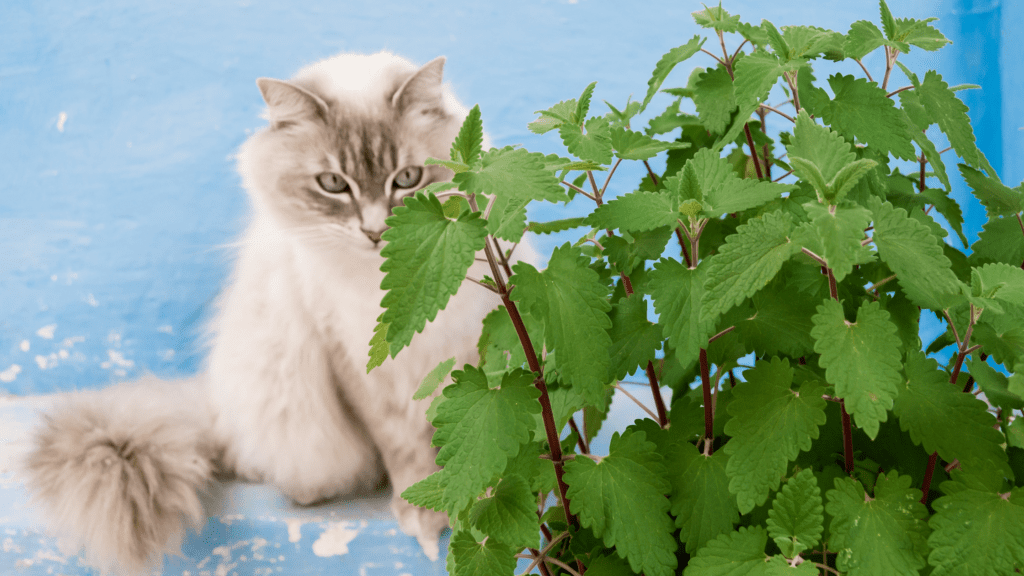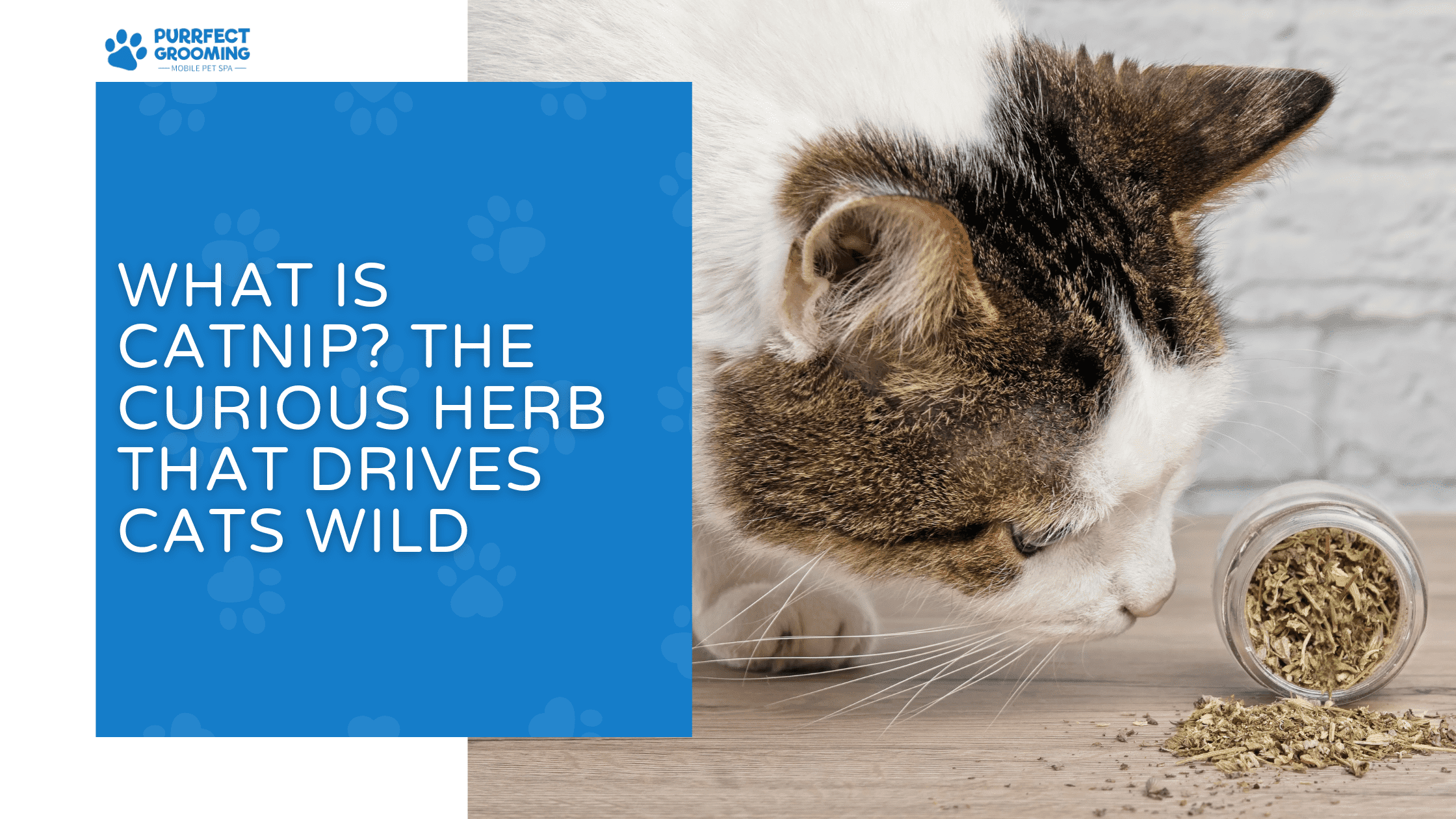What Is Catnip? The Curious Herb That Drives Cats Wild
Catnip, scientifically known as Nepeta cataria, is a perennial herb from the mint family that has a fascinating effect on many cats. Native to Europe and Asia, it is now widely grown in gardens and as a houseplant. The primary compound responsible for its effects is nepetalactone, which is found in the leaves, stems, and seeds of the plant.
When cats come into contact with catnip, they may exhibit behaviors such as rolling, rubbing, purring, and playful antics. This reaction is believed to be linked to the stimulation of sensory neurons, triggering a euphoric response that can last for about 10 to 15 minutes. Interestingly, not all cats respond to catnip — around 30% to 50% of cats lack the genetic sensitivity to nepetalactone and will show no reaction at all.
While catnip is generally safe for adult cats to consume in moderation, kittens under the age of six months typically do not respond to it, as their sensory receptors are not yet fully developed. Additionally, frequent exposure can lead to a diminished response, so it is best used as an occasional treat. Understanding how catnip affects cats can enhance their enrichment, providing both mental and physical stimulation. However, cat owners should always monitor their pets for any signs of overconsumption, as ingesting large amounts may lead to mild digestive upset.
What is Catnip?
Catnip (Nepeta cataria) is a perennial herb from the mint family that is native to Europe and Asia but now grows worldwide. It is best known for its ability to trigger a unique response in cats, thanks to the compound nepetalactone, which is found in the plant’s leaves and stems. When cats inhale or consume catnip, nepetalactone binds to their nasal receptors, stimulating a response in their brain that leads to playful or euphoric behavior.
Catnip Properties & Characteristics
| Property | Details |
| Scientific Name | Nepeta cataria |
| Family | Mint (Lamiaceae) |
| Active Compound | Nepetalactone |
| Effect on Cats | Stimulating, euphoric, playful, relaxing |
| Effect Duration | 5-15 minutes |
| Grows in | Europe, Asia, North America |
Historically, catnip has been used not just for cats but also for medicinal purposes in humans, as it has mild sedative and digestive benefits. However, its most famous use remains as an enrichment tool for felines.
What Does Catnip Do to Cats?
Catnip affects felines in two major ways:
- Stimulatory Effect – Many cats become highly active, rolling, pouncing, rubbing against objects, and acting hyper.
- Relaxing Effect – After the initial excitement, many cats experience a calming phase where they lay down, purr, or nap.
Typical Cat Reactions to Catnip
| Reaction | Common? | Duration |
| Rolling on the ground | ✅ Yes | A few minutes |
| Purring loudly | ✅ Yes | 5-10 minutes |
| Running and jumping | ✅ Yes | 5-15 minutes |
| Aggression or excitement | ⚠️ Occasionally | Varies |
| Relaxation after excitement | ✅ Yes | 10-30 minutes |
Not all cats respond to catnip, as sensitivity is inherited. If your cat doesn’t react, they may lack the genetic receptors needed to process nepetalactone.
Can Cats Eat Catnip?
Yes! Cats can safely eat catnip in moderate amounts. However, excessive consumption can lead to mild digestive issues like vomiting or diarrhea.
| Form of Catnip | Safe to Eat? | Common Use |
| Fresh Catnip | ✅ Yes | Stimulating playtime |
| Dried Catnip | ✅ Yes | Stuffed in toys |
| Catnip Spray | ❌ No | Spraying on cat furniture |
Can Kittens Have Catnip?
Kittens usually don’t react to catnip until they are around 3-6 months old. Younger kittens may ignore it entirely, as their sensitivity to nepetalactone develops over time.

Is Catnip Good for Cats?
Yes, catnip has multiple benefits, including:
- Encourages exercise – Great for indoor cats who need stimulation.
- Reduces stress – Helps anxious cats feel more relaxed.
- Promotes bonding – Play sessions with catnip toys strengthen owner-pet relationships.
| Consumption Method | Safe? | Effects |
| Sniffing/Inhaling | ✅ Yes | Stimulating, euphoric |
| Eating Small Amounts | ✅ Yes | Calming, mild relaxation |
| Eating Large Amounts | ⚠️ In Moderation | Can cause mild digestive issues |
While catnip is non-toxic, excessive consumption can lead to vomiting or diarrhea, so it should always be given in moderation.
However, excessive exposure can make some cats overly excited or aggressive.
Catnip Effect on Cats: Short-Term vs. Long-Term Reactions
| Effect | Short-Term | Long-Term |
| Hyperactivity | ✅ Common | ❌ No lasting impact |
| Relaxation | ✅ Temporary | ❌ Not long-term |
| Tolerance | ❌ No | ✅ Some cats become less responsive over time |
How to Use Catnip for Cats
- Sprinkle dried catnip on scratching posts or toys
- Use catnip sprays on bedding or play areas
- Give fresh catnip leaves for chewing
Always monitor your cat’s response and limit use if they become overstimulated.
Alternatives to Catnip
If your cat doesn’t respond to catnip, try these alternatives:
- Silvervine – A stronger stimulant than catnip.
- Valerian root – Encourages playfulness.
- Tatarian honeysuckle – A great option for non-catnip-sensitive cats.
How to Grow and Store Catnip
Growing catnip is easy! It thrives in:
✅ Full sunlight
✅ Well-drained soil
✅ Regular watering
To store dried catnip, keep it in an airtight container in a cool, dark place to maintain potency.
Fun Ways to Use Catnip for Your Cat
- Make DIY catnip toys – Fill old socks with dried catnip!
- Catnip-infused treats – Sprinkle a bit over their food for an extra treat.
- Training aid – Use catnip to encourage good behavior.
Does Catnip Work on Other Animals?
Surprisingly, some animals, like big cats (tigers, lions, leopards), also react to catnip! However, dogs and most other pets do not show the same response.
Conclusion & Pro Tip
Catnip is a fantastic way to enrich your cat’s life, providing both fun and relaxation. However, moderation is key to avoiding overstimulation.
Pro Tip: Store dried catnip in the freezer to keep it fresh for longer!
FAQs
1. Is catnip addictive for cats?
No, catnip is not addictive. Cats naturally lose interest after a short time.
2. Can catnip be harmful in large amounts?
Excessive consumption may cause mild stomach upset but is generally safe.
3. How often should I give my cat catnip?
A few times a week is ideal to prevent overexposure.
4. Why doesn’t my cat react to catnip?
Some cats lack the genetic sensitivity to nepetalactone.
5. Can I use catnip for training my cat?
Yes! Sprinkling catnip on scratching posts encourages proper use.
